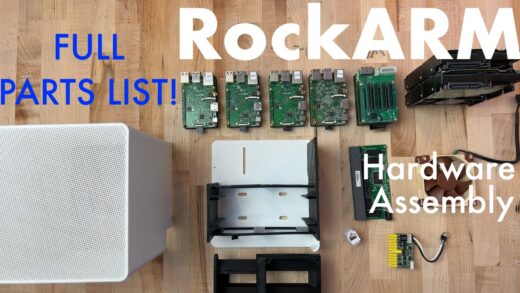This is my latest project, IRL 🙂 Most of my projects are computer-related, and though this one has some technical electronic aspects to it, it’s largely a mechanical and electrical engineering project.
I’ve been fascinated with the development of electric scooters over the years. In recent years with companies getting in to the on-demand city scooters (which frankly I detest, they become urban waste), the price of these scooters has plummeted. The entry-level ones are all generally based on one design, which helps with getting parts and making modifications. They’re all driven by brushless motors with Li-Ion batteries, and most now use regenerative braking, even further extending their range.
WHY?
I’m not a teenager. I have a car. I don’t live in a dense urban area where such a scooter is actually a practical way to get around for quick errands. Why would I want such a vehicle? I love toys, I love designing and modifying things, and that’s enough ‘why’ for me!
What eScooter, What Mods, and what for?
I shopped around a bit, and settled on the Hiboy S2R scooter. I chose this for a couple reasons: I really liked the idea of the quick-swap battery pack, so I could either easily drop in a fresh battery, in addition to being able to charge the battery away from the scooter. Secondly, this is one of those “M365 clones”, meaning its’ frame is a copycat of literally dozens of other eScooters, which makes sourcing parts and upgrade kits easy. Finally, price: I knew from the get-go I’d be cutting this scooter up, making major modifications to it, and I didn’t want to be in it for too much money. Sure, I could have bought a scooter that has most of the things I want already from the factory, but it would cost 3 times more, and where’s the fun in that?!
The major modifications I wanted to make right away were:
Dual motors
These scooters generally are front-wheel-drive. The first thing I noticed was poor performance on hills. I primarily ride this around the residential streets in my neighborhood, which has a lot of hills. Though it does really well, steep hills it poops out, and I end up having to give it some extra foot-power. We can fix this.
Suspension
The second much-needed modification that I immediately identified was the need for a full suspension. These inexpensive eScooters are “hard tails”, only worse, they’re “hard noses” too, if that’s even a term. There’s no suspension. They have solid rubber tires. The slightest bump is felt by the rider, and a rough road will shake you so hard your vision goes blurry! It needs a front and rear suspension kit.
Let’s start with the suspension
Though it still requires some kit modifications, the Monorim v3 kit is relatively drop-in for a front suspension kit. You can get it for about $99 USD. Using my affiliate link above does help support my site, so please use it if you’re going to buy one! This kit adds a well-designed front shock, includes bearings and shims, and there’s good YouTube videos for how to do the install in your garage. I did have to elongate the slot through the main fork tube with a Dremel, in order to be able to tighten up the the head bearings properly, but that’s pretty easy to do.
For the rear suspension, I went with a kit like this. Initially I wasn’t going to bother with a rear suspension kit, as the front made the ride smooth enough for my taste, but when it came to adding the rear motor, I was going to have to do some substantial modifications to the scooter’s frame. So I thought, if I’m going to do all that fabrication, it may as well be on a suspension arm, so I can get the advantage of that full suspension.

As you can see in the picture above, I have slotted out the rear suspension kit arms already, to receive the wider motor. In the picture, I have the left cover of the motor removed, which is why you see the motor coils; It won’t stay this way!
First, I needed to make some gussets for the motor axle, which needs to mount wider than the arms are. So, using some 3/4” steel round tube, I headed to my band saw and cut them to length. In this case, 15mm for the left side, and 11mm for the right side:

Next, we need a small plate for the anti-rotation plate to fit against. This prevents the axle itself from slipping or rotating over time, since it is putting torque out. It’s a bit hard to see in this picture, but I have made a small steel plate underneath the half-moon gusset, and the rectangle anti-torque plate on the axle fits against it:

With all these pieces mocked up and dry-fitted, it’s time to weld everything in! My welding skills are a bit rusty, so please excuse the less than robotic quality welds, but I assure you they’re mechanically strong, and will look better with some additional cleanup and paint.

With that done, we turn our attention to the hub motor itself. Most of the available hub motors you will find, have an integrated drum brake, like this one for example. I wanted to retain the original disc brake (not yet done) for better stopping power, and also to keep the frame width closer to stock. As it is, I already had to do a fair amount of re-working of the rear forks to accept the motor. Because of this, I pulled the drum assembly off of the new hub motor, and using my band saw, cut off the extra thickness from the left side of the hub cover:


With that trimmed off, I re-installed the left side cover on the hub motor assembly (which is what covers up the previously exposed motor coils pictured earlier), and fit the assembly in to the rear fork:


With the motor successfully mounted, it was time for a test ride!! I still have some work to do with mounting the ESC properly inside the scooter chassis, and some final work on that rear suspension mount, but I wanted to see at this point if all my work here was for nothing, or achieved the goal I set out for. So, I zip-tied the rear motor ESC on, tied up the wires to keep it out of trouble, made sure both motors are spinning the right direction (!!!) and at about the same rate on my bench…

… and, SUCCESS!! The first test, after a couple laps around my driveway, where immediately it was noticeable how much more torque the scooter has, was to attempt to go UP my driveway from the street: Our driveway is about 100 yds long, and very steep. The stock scooter, before any mods, was able to make it about 1/3 of the way up before stalling, and I’d have to give it a bit of help with my foot.
Now, it FLIES up the driveway with no hesitation, and plenty of power to spare! I was so thrilled to learn all of this actually paid off, and gave me the result I was after!
Without getting to0 carried away, I know I have to go back into my workshop for some final steps:
- Strip the rear ESC down to its’ bare circuit board, and mount it inside the scooter chassis. Screwing it to the scooter’s aluminum frame will allow it to act as a proper heat-sink
- Route the rear motor wires through the frame, exiting near the rear suspension, to properly protect them from damage
- Move the rear suspension assembly further forward. This will mean getting the correct angle on the coil shock, moving it as far forward as the chassis will allow, and TIG welding a support beam on the underside, to properly support its’ load. With that moved forward, the pivot point of the rear suspension (which currently is just using the stock rear wheels’ mounting holes) will move forward about another inch, with proper mounting holes drilled, the stem of the frame trimmed, and the wheelbase returned closer to original (right now, it is ‘stretched’ about 4 inches). This will also allow the fold-down steering bar hook to align again, so I can carry it around when folded as originally intended.
- Fitting the stock disc rotor to the rear hub left side, and building a mount for the stock brake caliper to mount to in the correct position.
- Mounting the stock mud guard over the rear tire, with the integrated brake light.
- Finally, tearing everything down, smoothing and grinding as needed, and re-painting the fabricated parts, for a clean, stock look.
The end goal of this will be a largely stock-looking scooter. Most would probably not notice the front and rear suspension unless you’re personally familiar with these scooters. The scooter looks like it “should have been” from the factory: full suspension! The addition of the rear motor is also not immediately obvious.
I completed this project about a year ago and rode the scooter many miles with friends, including some fairly long rides on sketchy dirt trails in the woods (because… why not?!), and it has performed flawlessly. I’m actually quite surprised something hasn’t gone wrong, nothing has broken, and no components have burned out or failed. The only two points to share as take-aways are:
- I did not end up re-applying the rear disc brake; the scooter is purely e-brake. I realize that’s not ideal from a safety and fail-safe perspective, but, I like to live dangerously 🙂 It just was not feasible to add that disc back in successfully within my skill set.
- Battery range – It did take a hit running with dual motors. A friend of mine has the exact same scooter unmodified, and he gets about 20% longer range than I do in normal conditions. Not unexpected and not unacceptable.
- Performance – Although top-end speed is no different on flat roads, hill climbing (compared to my friends’ stock scooter) is night-and-day better. At the end of the day, that was the goal of this modification, so I’m quite happy with that.
If you found this helpful and want to send me some love, please feel free to check out my Patreon page! I spend a lot of time on these projects, I’d love to keep doing them with your support!




What esc did you end up using
Hi, sorry for the super-late reply! I used the rear hub motor + speed controller kit linked below. Unfortunately the item is “not currently available” but you should be able to find this from the description and link, hopefully you can find it on eBay or from another buyer! Thanks for checking out my project!
https://a.co/d/0ir2Au5